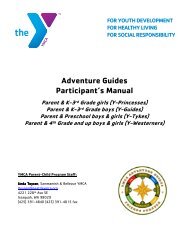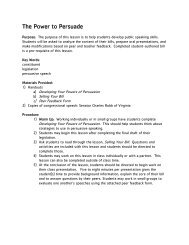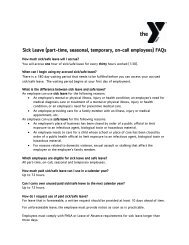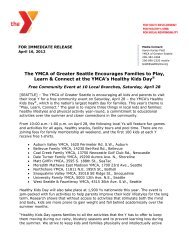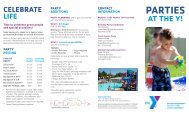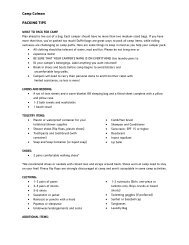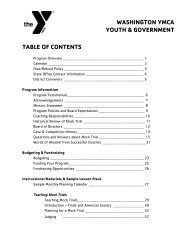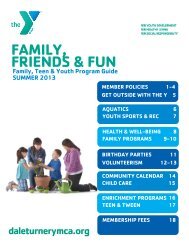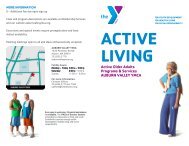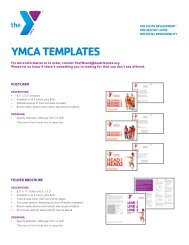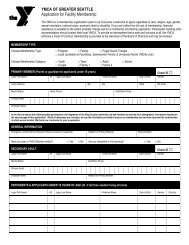washington mock trial rules of evidence - YMCA of Greater Seattle
washington mock trial rules of evidence - YMCA of Greater Seattle
washington mock trial rules of evidence - YMCA of Greater Seattle
Create successful ePaper yourself
Turn your PDF publications into a flip-book with our unique Google optimized e-Paper software.
Rule 407. SUBSEQUENT REMEDIAL MEASURESWhen measures are taken after an event which, if taken before, would have made the eventless likely to occur; <strong>evidence</strong> <strong>of</strong> the subsequent measures is not admissible to provenegligence or culpable conduct in connection with the event. This rule does not require theexclusion <strong>of</strong> <strong>evidence</strong> <strong>of</strong> subsequent measures when <strong>of</strong>fered for another purpose; such asproving ownership, control, or feasibility <strong>of</strong> precautionary measures, if controverted, orimpeachment.Comment: This rule serves public policy by encouraging property owners andmanufacturers to take corrective action after an accident occurs, without fear that plaintiffwill unfairly exploit that corrective action by claiming that the correction shows that thedefendant was at fault. For instance, if tenant slips on landlord’s staircase, the landlordshould then be able to install a safety tread on the staircase (a “subsequent remedialmeasure”) without tenant being able to point to the absence <strong>of</strong> a tread to support tenant’sclaim that landlord had negligently maintained the stairs when tenant slipped on them.The second sentence <strong>of</strong> the rule allows introduction <strong>of</strong> subsequent remedial measures forother purposes. In the example above, if defendant-landlord denied owning the apartmentbuilding, tenant could <strong>of</strong>fer <strong>evidence</strong> that landlord installed the safety tread after theaccident to support tenant’s claim that landlord owned or controlled the building.Rule 408. COMPROMISE AND OFFERS TO COMPROMISEEvidence <strong>of</strong> (1) furnishing or <strong>of</strong>fering or promising to furnish, or (2) accepting or <strong>of</strong>feringor promising to accept, a valuable consideration in compromising or attempting tocompromise a claim which was disputed as to either validity or amount, is not admissible toprove liability for or invalidity <strong>of</strong> the claim or its amount. Evidence <strong>of</strong> conduct orstatements made in compromise negotiations is likewise not admissible. This rule does notrequire the exclusion <strong>of</strong> any <strong>evidence</strong> otherwise discoverable merely because it is presentedin the course <strong>of</strong> compromise negotiations. This rule also does not require exclusion whenthe <strong>evidence</strong> is <strong>of</strong>fered for another purpose, such as proving bias or prejudice <strong>of</strong> a witness,negativing a contention <strong>of</strong> undue delay, or proving an effort to obstruct investigation orprosecution.Comment: This rule serves public policy by encouraging parties to attempt to settledisputes and to be candid in settlement discussions. Statements made in settlementnegotiations cannot be used to prove the weakness <strong>of</strong> an opposing party’s claim ordefense. But the rule allows admission <strong>of</strong> such statements “for another purpose,” such asproving a witness’s bias or prejudice.Rule 409. PAYMENT OF MEDICAL OR SIMILAR EXPENSESEvidence <strong>of</strong> furnishing or <strong>of</strong>fering or promising to pay medical, hospital, or similar expensesoccasioned by an injury is not admissible to prove liability for the injury.



